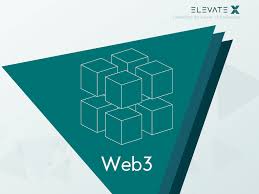Effectively educating users about the importance of privacy in Web3 applications is crucial for raising awareness and promoting responsible use of decentralized technologies. Here are some strategies to consider:
- Clear and Accessible Documentation: Provide clear and accessible documentation that explains the privacy features and mechanisms implemented in your Web3 application. Use plain language and avoid technical jargon as much as possible. Break down complex concepts into easily understandable terms, ensuring that users can grasp the importance of privacy without feeling overwhelmed.
- User-Friendly Tutorials and Guides: Create user-friendly tutorials, guides, or video demonstrations that walk users through the privacy settings and functionalities of your application. Showcase the benefits of privacy, such as data protection, control over personal information, and reduced risks of surveillance or data breaches. Make these resources easily accessible on your website or within the application itself.
- Visualizations and Infographics: Utilize visual aids, such as infographics or diagrams, to illustrate the flow of data, encryption techniques, or privacy-enhancing features. Visualizations can help users grasp complex concepts more easily and convey the importance of privacy in a visually engaging manner.
- Real-World Examples and Case Studies: Provide real-world examples and case studies to demonstrate the potential consequences of privacy breaches or data misuse. Highlight instances where privacy violations have led to identity theft, financial losses, or reputational damage. Presenting concrete scenarios can help users understand the tangible impact of privacy protection.
- Privacy Awareness Campaigns: Launch privacy awareness campaigns through your website, social media channels, or collaborations with relevant organizations. Share educational content, articles, or videos that discuss privacy-related topics and promote best practices for protecting personal data in the Web3 ecosystem. Engage with your community, answer questions, and foster discussions around privacy concerns.
- Community Events and Workshops: Organize community events, webinars, or workshops focused on privacy in Web3 applications. Invite experts to speak about privacy, data protection, and the implications of decentralized technologies. Encourage participants to ask questions, share their experiences, and learn from one another. Foster a sense of community engagement and active participation in privacy-related discussions.
- Privacy-First Design Principles: Emphasize privacy-first design principles in your application’s development and user experience. Clearly communicate to users how privacy has been prioritized and integrated into the design and architecture of your Web3 application. Highlight features like encryption, pseudonymity, or decentralized identity to demonstrate your commitment to protecting user privacy.
- Collaboration with Privacy Advocacy Groups: Collaborate with privacy advocacy groups, organizations, or experts in the field to amplify your educational efforts. Jointly create educational materials, co-host events, or participate in industry-wide initiatives that promote privacy awareness. Partnering with established privacy-focused entities can lend credibility to your educational initiatives.
- Continuous Communication: Maintain an open line of communication with your users regarding privacy-related updates, new features, or changes in privacy policies. Regularly communicate the steps you are taking to protect user privacy and address any user concerns promptly. Transparency and ongoing communication are key to building trust and fostering a privacy-conscious user base.
Effectively educating users about the importance of privacy in Web3 applications requires clear communication and targeted messaging. Here are some strategies to consider:
- Simplicity and Clarity: Use plain, non-technical language to explain the concept of privacy in Web3 applications. Break down complex ideas into digestible and relatable terms. Avoid overwhelming users with technical jargon. Illustrate the benefits of privacy in concrete and understandable terms.
- Real-World Examples: Provide real-world examples that highlight the potential risks and consequences of not prioritizing privacy. Show users how their personal information can be misused or compromised in centralized systems, emphasizing how Web3 applications can protect their data.
- Visuals and Infographics: Utilize visuals and infographics to explain privacy-related concepts and demonstrate the flow of data in Web3 applications. Visual representations can help users grasp complex ideas more easily and increase their understanding of privacy issues.
- Comparative Analysis: Compare Web3 applications with traditional centralized applications, highlighting the key differences in terms of privacy, data control, and security. Show users how Web3 applications empower them by giving them ownership and control over their data.
- User Stories and Testimonials: Share stories and testimonials from users who have experienced the benefits of privacy in Web3 applications. Personal anecdotes and case studies can help users relate to the importance of privacy and see its practical impact on their lives.
- Engaging Content: Create engaging content such as videos, blog posts, or podcasts that discuss the importance of privacy in Web3 applications. Present the information in an interesting and relatable manner that captures users’ attention and keeps them engaged.
- Provide Practical Steps: Offer practical steps or guidelines on how users can protect their privacy in Web3 applications. Educate them on best practices for maintaining their privacy, such as using strong passwords, enabling two-factor authentication, and being cautious with sharing personal information.
- Community Engagement: Foster a sense of community among Web3 application users. Encourage users to share their experiences, knowledge, and concerns about privacy. Facilitate discussions and answer questions to help users understand the importance of privacy in Web3 applications.
- Partnerships and Collaboration: Collaborate with organizations, influencers, or experts who advocate for privacy and data protection. Partnering with like-minded entities can help amplify the message and reach a wider audience.
- Continuous Education: Privacy in Web3 applications is a rapidly evolving field. Provide regular updates and educational resources to keep users informed about the latest privacy-enhancing technologies, best practices, and regulatory developments. Offer workshops, webinars, or online courses on privacy-related topics.
Overall, the key to effective education about privacy in Web3 applications is to make the information accessible, relatable, and actionable. By using simple language, providing real-world examples, utilizing visuals, and staying engaged with the community, users will be more likely to understand the importance of privacy and take appropriate measures to protect their data in Web3 applications.
